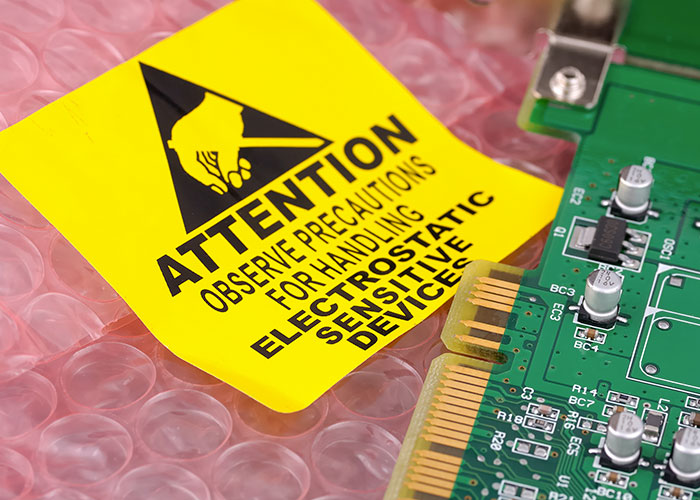Tổng hợp
What is Electrostatic Discharge (ESD)?
We observe electrostatic phenomena occurring in nature and in life:
The bristles are attracted towards the bar of the glass rubbing against the wool material.
We get a little jerk as we walk across a rug and touch the metal door handle.
Static electricity we feel after drying clothes in a clothes dryer.
Lightning flash phenomenon of the set when it rains
This is electrostatic discharge. ESD is almost harmless, but in industrial environments it can be a costly problem.
So what is Electrostatic Discharge?
Electrostatic discharge (ESD) is a sudden electrical current between two charged objects caused by an contact, an electrical shock, or a dielectric failure.
This happens when two different materials rub against each other. One of the materials will be positively charged, the other will have a negative charge. Positively charged materials now have a static charge. When that charge comes into contact with the right material, it is transferred and we have an ESD phenomenon.
The ESD creates very high heat, even though we don't feel it. However, when a charge is released onto an electronic device such as an expansion card, the intense heat from the charge can melt or evaporate small parts in the card, causing the device to fail.
Sometimes an ESD event can damage the device, but it keeps working. This is called a potential defect, which is difficult to detect and significantly shortens the life of the device.
Under the development of science and technology, the requirements for electrostatic control increased. Especially in the electronics industry.
The lifespan of electronic devices has a lot to do with static electricity and electrostatic discharge. Electronic devices are becoming faster and more compact, so the requirements for electrostatic control are increasing.
Equipment failure costs range from a few cents for a single diode to several thousand US dollars for a complex circuit board. Not to mention the cost of repair, warranty, maintenance, transportation, storage, labor and management costs also increased significantly.
Today there are thousands of companies in the electronics sector that make antistatic control a requirement. The International Antistatic Organization (ESDA) anti-static control standards provide guidance so that companies can exercise antistatic control in their manufacturing processes.
Problems caused by ESD:
ESD causes damage in an ESD sensitive product that is permanent and it shows quick results.
Potential Product Error - Potential defect that shows slow results. On the first check it passes the test but after a while it starts to show effects such as errors in the system, slowing down the signal. Potential defects can be very costly because the product passes all checks, and the product is completed and shipped.
Anti-static solution:
Different materials have different solutions. For conductive materials the most common method is the direct earthing.
For materials that do not conduct static electricity such as natural, mixed materials, the only solution is to use an ionizer. This is a method of generating ions that neutralize electrostatic regions, if not neutralized by free charges, static electricity is lost very slowly. Insulating materials allow positively and negatively charged groups to form. When charges cannot travel on the surface of this material, grounding cannot remove these charges. Ionization is the only means of removing static electricity from insulating materials. The ionization of free electrons in the air by high voltage polarization produces a continuous stream of positive and negative charges. These charges will combine with opposite charges on the surface of the material thereby eliminating the electrostatic charge on the insulating surface.
Antistatic devices can remove ions by neutralizing them. Some common anti-static devices are: antistatic bar, anti-static nozzle, antistatic gun, gas knife, ion blower, electrostatic charger, electrostatic bracelet, anti-static floor, wire ground… (antistatic bar, ionizing nozzle, ionizing gun, air knife, ionizing blower, charging, wrist trap…).
Electronic products and components are easily damaged by static electricity. To protect these products, anti-static bags are used.
To anti-static for a printer system, people attach antistatic bars to some positions so that it neutralizes ions generated from paper during rubbing, rolling discharge, drying ...
To prevent static electricity during the painting process, an ion fan or antistatic bar mounted near the spray site is used to remove the ion in the paint particles. Due to not being contaminated with static electricity, the paint particles stick firmly to the surface of the seeds to be painted, creating a more aesthetic paint.
And there are many more applications of anti-static tools in preventing static electricity causing damage to production and human life.

